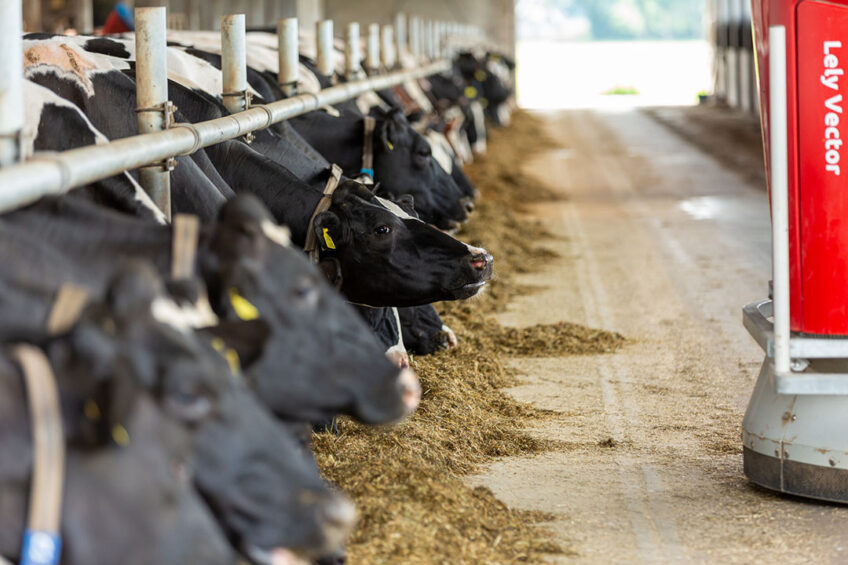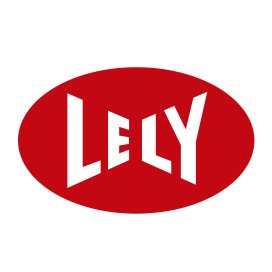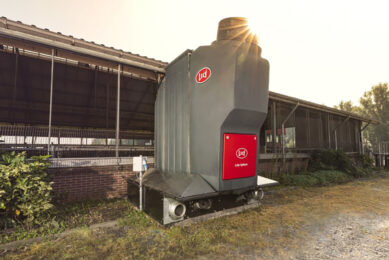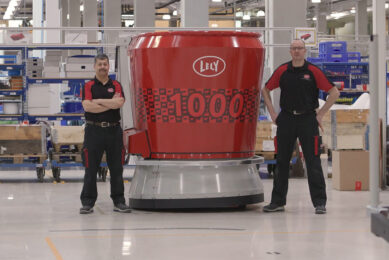Automatic feeding doesn’t just save on labour

When the Groot Roessink family’s cows return to the barn after a morning of grazing, a tailor-made ration is waiting for them. The cows have been fed automatically with the Lely Vector since the beginning of the year.
The family farm in Baak (NL) is run by Ton Groot Roessink, his partner Kim and parents Anton and Anneke. Together, they work passionately on further developing and optimising their farm and making it more sustainable. In this respect, cow health is a priority.
“We want to take steps towards a sustainable future that’s right for us,” explains Ton. “Feeding more efficiently and reducing the farm’s CO2 footprint reflect this perfectly.”

Electric feeding
“Our feed mixer was small and virtually worn out,” says Ton. “We weren’t specifically looking for a new feeding system, but we were given the opportunity to test an electric feed mixer. We loved the concept because it saves a lot of fuel, but the extra price compared to a traditional feed mixer was too high.
“We continued our search for a feeding system suited to the size of our farm, with fuel savings, labour flexibility and particularly labour savings all important factors. After looking around and asking the opinions of fellow livestock farmers, we ended up with the Vector automatic feeding system.”

Mixing quality a must
Good mixing quality was important for Groot Roessink. “We still had some concerns about this aspect,” Ton admits. “We asked around at some other farms about their experiences, and they were positive,” he says. They confidently started using the Vector in late 2019. “Together with our feed advisor, we measured the mixing quality several times and in various places with a shaker box. The results everywhere along the feeding fence were great,” he says with satisfaction.
“It’s a different way of working,” the farmer notes. “The cows are now given small portions several times a day. The Lely Center advisor and our feed advisor together optimised the settings after operational start-up, such as the loading sequence and the mixing time.”

Higher lactation figures of heifers
The farmers feed the dairy cows, dry cows and the young stock five different rations. The cows are milked three times a day on the farm. “Feed intake is particularly high around milking times. The Vector monitors the quantity of feed in front of the feed fence during its feed pushing round and provides extra feed where necessary. This means the cows always have fresh feed available,” explains Ton. “The lactation figures have shown us that the heifers are now doing better; this has now risen to 104–105,” he says with satisfaction.
Benefits in the summer
“It was in the summer that we saw the greatest benefits so far. The cows have constant access to fresh feed, so the feed intake and milk yields remain at the right level,” says Ton, noting that this is an improvement compared to previous years.
Feeding more often also has a positive effect on cow health. “Every month we check pregnancies, at which time the manure is also assessed. We’ve seen an improvement in manure quality (more homogeneous manure). As an added bonus, there are now fewer cystic cows in the grazing period, which is good for fertility.”

Rather be walking among the cows
The task of feeding used to be the responsibility of father Anton. He fed the dairy cows once a day, and the dry cows and heifers once every 2–3 days. Less work and more frequent feeding were important reasons to move to automatic feeding. “You can of course also feed the cows more often with the feed mixer, but it all takes a lot of time,” says Ton. “We all enjoy the labour savings and flexibility that this system provides! My parents are still fully involved in the farm, but have plenty of time to enjoy the ‘autumn of their years’ and grandchildren. In any case, I’d rather walk among the cows than feed them from a telehandler,” concludes Ton.
Author: Marije Hospes, Lely




